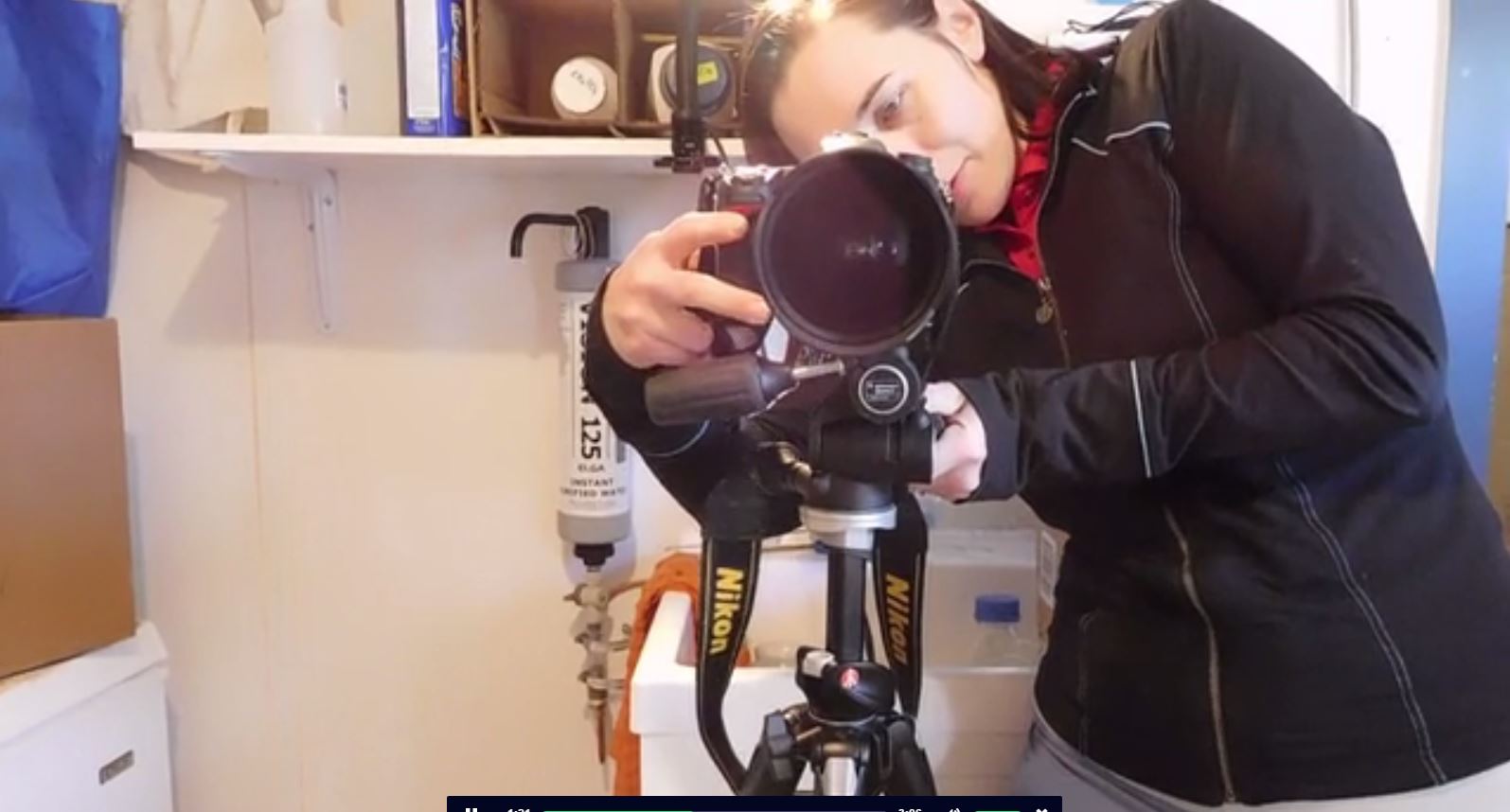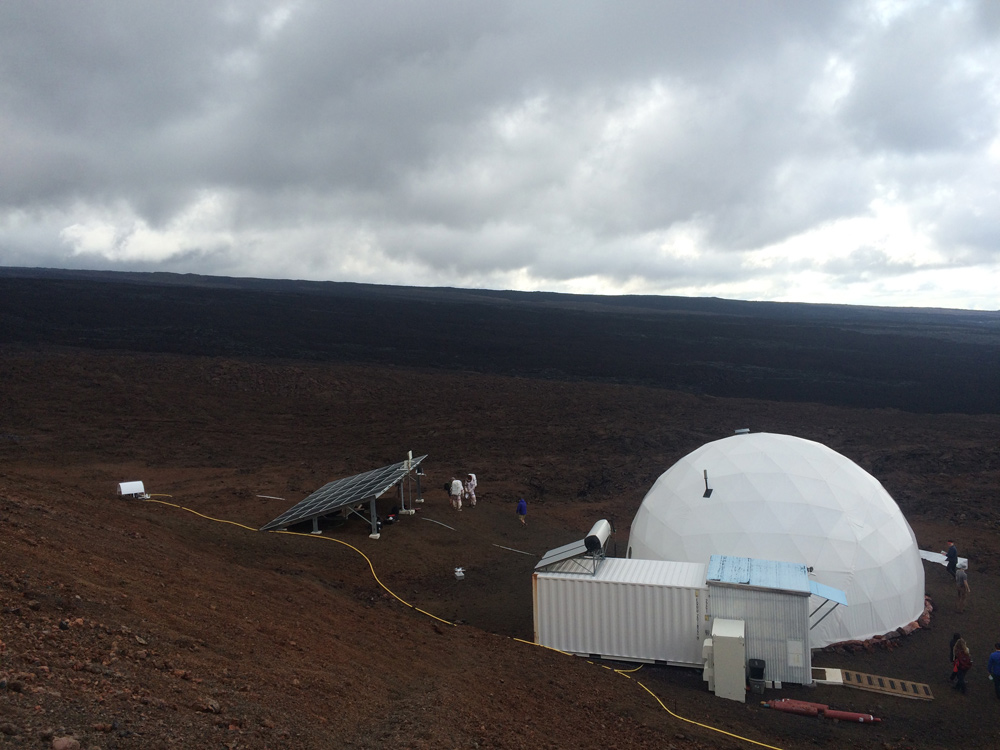Exiles on 'Mars': Doc on Hawaiian Mock Mission Seeks Funds

A documentary film that would feature exclusive footage from a yearlong mock Mars mission is seeking funding on Kickstarter.
Who would want to live in a barren, isolated environment for a year, far from friends, family and the rest of the outside world? The answer is many astronauts, as well as one plucky crew simulating a Mars mission in Hawaii.
RED HEAVEN -- Official Trailer from Katherine Gorringe on Vimeo.
The HI-SEAS program (Hawaii Space Exploration Analog and Simulation) is examining how humans would live, work and play on Mars or another space-based location. The most recent HI-SEAS crew spent a year in an isolated habitat on Mauna Loa in Hawaii, to simulate ;what living conditions might be like for a crew of real Mars astronauts. [Life on Mars: Inside The HI-SEAS Isolation Habitat (Gallery)]
During the yearlong mission, the crew filmed its experiences inside the habitat. Some of that footage will soon be released as part of a new documentary called "Red Heaven," if an online fundraiser goes to plan. The creators of the documentary have raised nearly $32,000 of their $40,000 goal on Kickstarter, with 10 days to go. (If the goal is not met, the pledged funds are refunded to the donors, and the filmmakers walk away with nothing.) The money will be used to film the subjects acclimating to lives in their hometowns, and also for postproduction, including editing and creating a soundtrack.
"When we embarked on telling this story about the HI-SEAS project, we were told there was no way for us to capture life inside the dome, since it is, above all, research for NASA," the filmmakers, Katherine Gorringe and Lauren DeFilippo, wrote on the project's Kickstarter page. The pair were film students at Stanford University when they began the project two years ago.
"We took a risk and flew to Hawaii to film with the crew before they entered the simulation, and we were able to build trust with the project and the crew themselves," the project's description said. "They opened their lives to us, and gave us exclusive access to make this feature film."
Breaking space news, the latest updates on rocket launches, skywatching events and more!
The film is co-produced by Structure Film's David Alvarado and Jason Sussberg, who are working on a documentary about Bill Nye (TV's "Science Guy"). This connection has allowed Gorringe and DeFilippo to offer some cool rewards for people who donate to the Kickstarter campaign.
Donors who pledge $15 or more will receive a "Bill Nye Rare Digital Bundle" that includes "an eclectic assortment of articles, historic photographs, interviews, GIFs, text-message tones featuring Bill's catchphrases" and a set of "Bill Nye-themed emojis." Other reward possibilities include a "Red Heaven coozie," a HI-SEAS one-year crew patch, a drawing by the crew space architect, and various options to stream or receive copies of the film. The most generous backers can receive tickets to the movie's premiere, or exclusive meetings with the people in the habitat.
This iteration of HI-SEAS was the fourth isolation mission for the program, which is run by the University of Hawaii at Manoa and funded by NASA. There are strict conditions for living on simulated Mars, including having no fresh food (other than the sporadic vegetable crops that the crewmembers manage to grow themselves), a 20-minute delay in all communications with the outside world (which means no phone calls) and text-only access to the internet.
Crewmembers didn't leave the dome except for simulated extravehicular activities, during which they had to wear spacesuits or hazmat suits. And all exercise was done inside the habitat (which, at 1,200 square feet or about 110 square meters, is roughly the size of a one- or two-bedroom house).
Despite a breakdown in plumbing and some occasional crew conflicts, all six crewmembers told Space.com that they would sign up for the experience again, or even take a voyage to Mars itself if the opportunity became available.
You can learn more about "Red Heaven" on social media on Facebook, Instagram and Twitter, @redheavenfilm, as well as via its Kickstarter page here.
Follow Elizabeth Howell @howellspace, or Space.com @Spacedotcom. We're also on Facebook and Google+. Original article on Space.com.

Elizabeth Howell (she/her), Ph.D., was a staff writer in the spaceflight channel between 2022 and 2024 specializing in Canadian space news. She was contributing writer for Space.com for 10 years from 2012 to 2024. Elizabeth's reporting includes multiple exclusives with the White House, leading world coverage about a lost-and-found space tomato on the International Space Station, witnessing five human spaceflight launches on two continents, flying parabolic, working inside a spacesuit, and participating in a simulated Mars mission. Her latest book, "Why Am I Taller?" (ECW Press, 2022) is co-written with astronaut Dave Williams.

